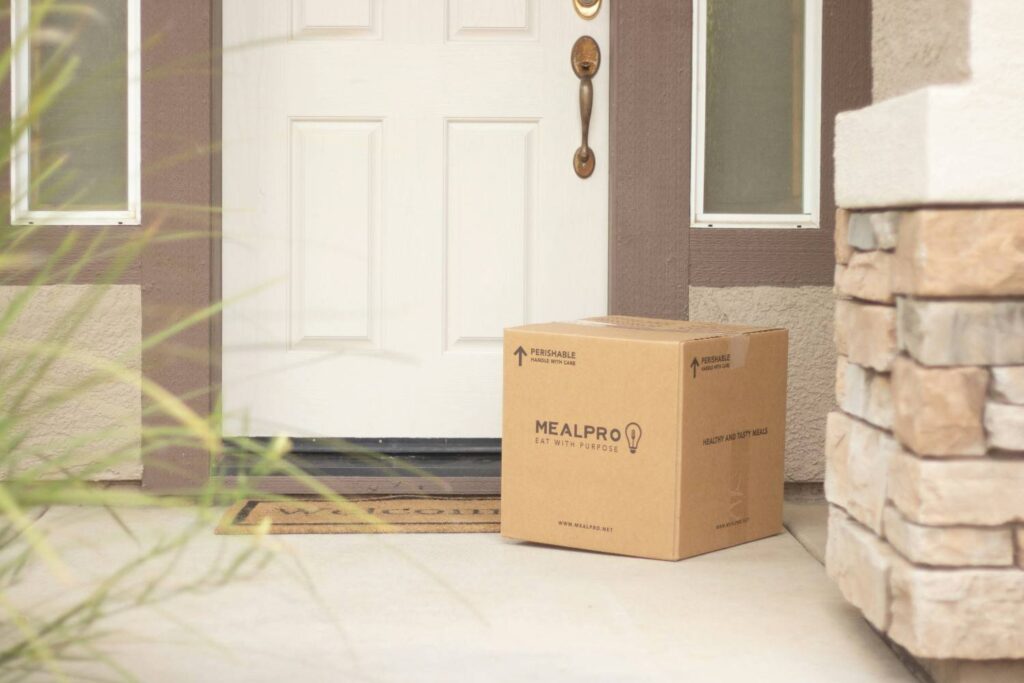Free shipping has become one of the most powerful tools in online shopping today. But what does free shipping mean in practice? Is it really free, and if not, who pays for it? In the world of eCommerce, the simple term free shipping carries a lot of weight—it shapes buying decisions, brand loyalty, and how people perceive value online. In basic terms, it’s a delivery option where the customer doesn’t pay extra at checkout for shipping their purchased items to them. Straightforward enough. Yet once you peel it back, you realize there’s more going on—customer psychology, pricing strategies, and business decisions all factor into offering free shipping.
In this article, I’ll walk through what free shipping really means, the different forms it takes, why businesses offer it, and how companies can offer it without losing money.
The Meaning of Free Shipping

The meaning of free shipping is simple enough: it’s when a customer doesn’t pay a separate delivery fee at checkout for their purchased items. But for store owners, the real question isn’t just what free shipping means – it’s what it means for their bottom line.
In eCommerce, free shipping doesn’t remove costs—it simply shifts them around. Whether it’s absorbing shipping expenses yourself, adjusting product prices, or building thresholds for free delivery, someone still pays that bill. You might also come across other similar phrases online—complimentary shipping or even free shipments—but they all describe the same core concept: a pricing strategy designed to reduce friction at checkout by eliminating shipping costs and boosting conversions.
Understanding this distinction is key. Free shipping isn’t a giveaway—it’s a calculated decision that can shape customer perception, influence cart size, and strengthen loyalty when done strategically.
Is Free Delivery the Same as Free Shipping?

Most of the time, yes. Free delivery and free shipping are used interchangeably. A few companies make a distinction, reserving “delivery” for local couriers and “shipping” for longer-distance carriers. But for the customer, it comes down to the same experience—customers are not paying to have their goods delivered.
Types of Free Shipping in eCommerce

Free shipping isn’t a standard, one-size-fits-all. Businesses get creative with how they offer it, and the approach often depends on profit margins and customer expectations.
Free Standard Shipping

What is free standard shipping? It usually refers to the most economical delivery option—typically five to seven business days. For store owners, offering standard shipping at no cost can be a smart way to compete with larger retailers without eroding profit margins too quickly. It appeals to shoppers who value savings over speed and can significantly lower cart abandonment rates.
From a free standard shipping standpoint, standard delivery also helps set clear expectations. Customers know it’s not the fastest, but it’s reliable and affordable. Retailers often use this option as a baseline, reserving faster shipping methods as paid upgrades—allowing them to maintain profitability while still offering the magic word “free.”
Conditional Free Shipping

Conditional free shipping is one of the most effective sales levers available to online stores. The most common form of conditional free shipping is to offer this option only if the total value of the order (purchased items) exceeds a minimum threshold. This model encourages customers to spend a minimum amount—say, $50 or $75—to unlock free shipping. It’s a win-win: shoppers feel like they’re getting extra value, while retailers boost their average order value to offset the cost of fulfillment.
To make free shipping sustainable, it’s worth testing different thresholds. Some businesses set higher minimums during peak seasons or pair this with promotional discounts. Conditional free shipping can also be tied to loyalty tiers, incentivizing repeat purchases without affecting overall margins.
Promotional or Seasonal Free Shipping

What is promotional free shipping? These limited-time offers—like free delivery during Black Friday or holiday weekends—play into the psychology of free shipping. They create urgency, drive quick conversions, and help clear seasonal inventory. The sense of scarcity (“this weekend only”) pushes hesitant shoppers to act now rather than later.
From a business perspective, promotional or seasonal free shipping works best when tied to specific goals. For example, you might offer it during a product launch, to re-engage inactive customers, or as part of a broader email campaign. The key is to position it as a reward, not a constant expectation, so it retains its power to motivate.
Complimentary Shipping for Loyalty Members

Many retailers use complimentary shipping as a cornerstone benefit in their loyalty programs. Amazon Prime popularized the model, but today even small and mid-sized brands are using it to keep customers coming back. It’s not just about free delivery—it’s about belonging or associating with a brand. When shoppers feel recognized and rewarded, they’re more likely to choose your brand over competitors.
From a cost perspective, this complimentary shipping meaning doesn’t imply free for the business. Instead, the cost is absorbed strategically, often balanced by increased purchase frequency, the ability to promote items or sales and stronger lifetime value. For brands with repeat buyers, this approach can turn a basic perk into a long-term retention strategy.
Who Pays for Free Shipping?

Despite the Free Shipping name, shipping costs something, and someone is paying for it. The cost is usually: :
- Folded into the product price
- Absorbed by the retailer as a marketing cost
- Offset with bulk carrier discounts or increased sales
That’s why it’s worth understanding how companies manage free shipping without impacting margins significantly.
Why Do Companies Offer Free Shipping?

So why do so many retailers offer free shipping, even when it reduces margins? Well, a few main reasons stand out:
- Increase Sales and Conversions: According to a 2022 Shopify study, free shipping increased conversion rates by as much as 50% for some stores. In other words, does free shipping increase sales? Absolutely—and the data backs it up.
- Reduce Cart Abandonment: Research from Baymard Institute shows that 48% of U.S. online shoppers abandon carts due to extra costs like shipping.
- Compete With Big Retailers: Amazon set the bar and shopper expectations. Smaller brands often feel they must do the same in order to compete.
- Build Customer Loyalty: Simplifying checkout keeps shoppers coming back. For more, see here.
- Improve Brand Reputation: In eCommerce, free shipping is more than a pricing tactic—it shapes how customers perceive your brand. Removing extra costs at checkout signals transparency and customer focus, building trust and encouraging shoppers to complete—and recommend—your store.
- Tap Into the Psychology of “Free”: The word “free” has a strong pull. People are more likely to buy when they feel they’re getting something extra—even if the product price is slightly higher.
- Reach More Customers With Free Domestic Shipping: Many brands offer free domestic shipping within one country, while international buyers still pay extra. The free domestic shipping meaning is straightforward—it simply covers deliveries made within the same country, keeping international orders separate.
Disadvantages of Free Shipping for Businesses

Of course, free shipping isn’t all upside. Businesses wrestle with trade-offs like:
- Thinner profit margins: Covering shipping costs cuts into revenue. Many brands offset this by raising product prices slightly or setting minimum order thresholds.
- Higher expenses for heavy or bulky products: Shipping large or fragile items can quickly eat away at margins. Limiting free shipping by weight or region helps control costs.
- Customer expectations: Once you offer it, shoppers may expect it every time. Seasonal or conditional free shipping can reset those expectations without hurting loyalty.
- Free international shipping challenges: Global delivery fees and customs make this difficult, unless you are shipping high value items. Most retailers only offer free domestic shipping, while charging for international orders.
- Competitive pressure from larger retailers: Giants like Amazon have set a high bar. Smaller stores can compete by emphasizing personal service, loyalty rewards, or faster handling.
- Complex or hidden pricing strategies: Absorbing shipping costs can complicate pricing. Clear communication—showing how free shipping fits into total value—builds trust and transparency.
How To Offer Free Shipping and Still Make Money

So how do you make it work without going broke? When you approach it with the right tools and data, free shipping can drive conversions and protect your bottom line. A few tried-and-true tactics:
Here are several proven strategies used by smart eCommerce businesses:
- Set a minimum order threshold
Only offer free shipping on orders above a certain amount to increase average order value and offset costs. - Limit it to domestic shipping
International rates are steep—restricting free shipping to within your country keeps costs predictable and manageable. - Offer only free standard or economy shipping
Free doesn’t have to mean fast. By offering slower shipping methods, you reduce your own fulfillment expenses. - Build shipping costs into product pricing
Adjust pricing slightly so shipping is “free” but still covered. Customers prefer transparency—even if they’re technically still paying for it. - Use fulfillment tools and rate shopping software
Platforms like OrderCup help businesses compare carrier rates, batch label printing, and optimize shipping zones—saving both time and money. - Partner with carriers or negotiate rates
Many carriers offer discounted rates for consistent volume. Don’t be afraid to negotiate—especially during peak seasons. - Offer free shipping only on select items
Reserve the offer for lightweight or high-margin products to reduce risk while still marketing the perk.
By combining these approaches, businesses can offer competitive shipping perks without cutting into their profits. It’s all about being strategic—offering value without undercutting your own success.
Final Thoughts on Free Shipping Strategies

So—what does free shipping mean today? It’s more than covering a shipping fee. It’s a powerful way to influence customer decisions, strengthen loyalty, and stay competitive. For online retailers wondering how to offer free shipping effectively, the answer often lies in balancing customer expectations with operational costs.
Free shipping isn’t just a marketing gimmick—it’s a strategy. But to make it sustainable, you need to be intentional. Set smart order minimums, choose cost-effective shipping options, and use tools like OrderCup to streamline fulfillment, compare carrier rates, and cut operational costs. When you approach it with the right tools and data, free shipping can drive conversions and protect your bottom line. It’s not just an additional expense—it’s a smart move that drives growth.
FAQs: What Does Free Shipping Mean

Free shipping vs fast shipping: what matters more?
Most shoppers will pick slower free shipping over paying for faster delivery.
What does free shipping mean in Amazon?
For Prime members, it means unlimited deliveries without added costs. Non-members usually qualify once they hit a minimum order value.
Is free shipping a marketing tactic?
Yes, it can be. It removes friction at checkout and makes people more likely to buy.
What is free domestic shipping?
It means that shipping is free for orders shipped within a country. International orders often still incur shipping fees.
How long does free standard shipping usually take?
Typically, free standard shipping takes 2–7 business days, depending on the retailer and the shipping carrier and service. Many sellers offer free shipping via economical services like USPS Ground Advantage, which delivers in 2–5 business days within the U.S. It’s a popular choice because it balances affordability with reasonable speed.
For more details, check out this guide to USPS Ground Advantage.




